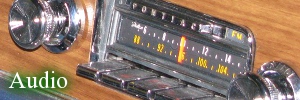















Heavy Traffic Makes It Harder For Children to Breathe |
|---|

|
Rose Hoban
Durham, North Carolina
Voice of America
December 27, 2007
 Listen to Heavy Traffic Makes It Harder For Children to Breathe - MP3 - 576KB - 2:27
Listen to Heavy Traffic Makes It Harder For Children to Breathe - MP3 - 576KB - 2:27
In many parts of the world, the number of vehicles on the roads is increasing rapidly. And for children who live close to the roads where those cars and trucks travel, rates of asthma — and its severity — are sure to increase. Rose Hoban has details.
Emissions from vehicle tailpipes make it harder for children to breathe, according to Dr. Fernando Holguin, a researcher with the U.S. Centers for Disease Control and Prevention.
He says the issue is proximity. "We knew that children in particular are susceptible, and most of all children with underlying lung diseases. So we decided to study kids with and without asthma. We are interested in seeing whether they would be evenly susceptible, or would be injured as much by the pollutants."
So Holguin and his colleagues studied 200 children, half who had been diagnosed with asthma and half who did not have the disease. They mapped where the children lived and went to school, in relation to heavily trafficked highways. They also took into account factors such as smokers in the children's homes and the types of stoves their families used.
Holguin found the asthmatic kids who lived in higher traffic areas had greater decreases in lung volumes compared to others in the study. And, he says, the closer their homes were to the traffic, the greater the effect. "So, for example, kids that lived in those areas [that have the highest density roads around the houses] had more decrements in lung function and more airway inflammation. And of course because you're looking at an exposure that doesn't change in time — you know how much traffic is around your house in terms of road grid — the measurement doesn't change, so any effect that you see is likely to be a chronic effect."
Holguin suggests some of the detrimental effects are caused by the types of pollutants that are present closer to roads. "Within about 50 to 100 meters, there is a much higher concentration of fine and ultrafine particles, which are the ones that can penetrate your lungs much more easily." Holguin explains that ultrafine particles are much too small to see, but they can carry damaging traces of metals and other toxic materials. The concentration of these particles drops off quickly as distance from roads increases. He adds, "You are also exposed to higher concentration of nitrogen dioxide and carbon monoxide."
Holguin notes that poorer children frequently live in households that are closer to heavily trafficked thoroughfares, and are therefore more likely to become asthmatic in the future.
Holguin's paper is published in the American Journal of Respiratory and Critical Care Medicine.
